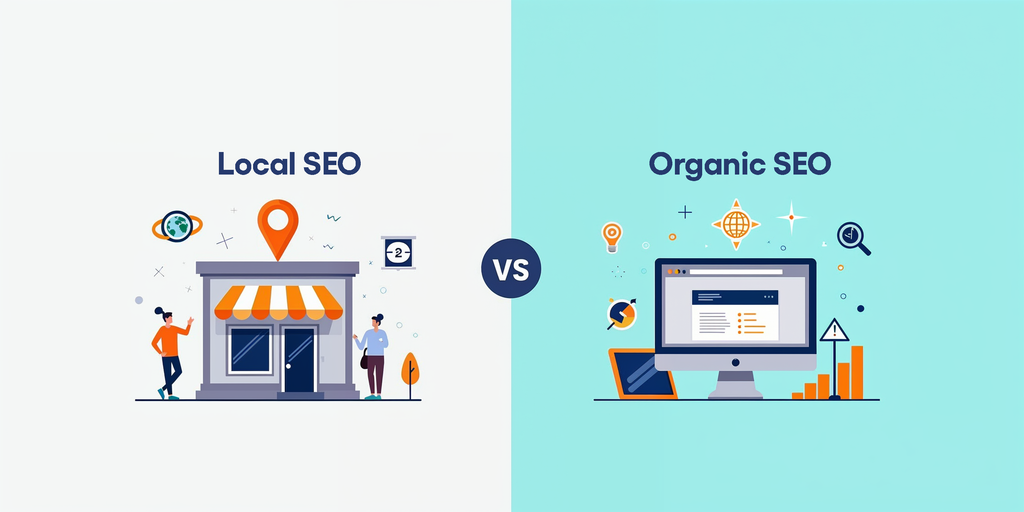How to Find Entities for SEO Optimization: A Comprehensive Guide

If you're still focusing on keywords alone, it's time to step into a world where entities dominate SEO. Entities aren't just words—they’re identifiable things like people, places, concepts, and products that help search engines deliver the most relevant results. In today’s SEO landscape, mastering entity optimization is key to outranking your competitors. Let's dig into how you can find and optimize these entities to improve your rankings and boost visibility.
What Are Entities in SEO?
Entities are not just keywords; they’re distinct objects that search engines recognize and connect with other relevant information. Think of them as real-world objects with names and unique attributes. While a keyword is just a string of text, an entity carries a deeper meaning. It's not just “Paris”—it’s Paris, France, with all its associated places like the Eiffel Tower, museums, and landmarks.
Why should this matter to you? Because Google’s Knowledge Graph uses entities to understand the relationships between concepts, offering a broader and more sophisticated way to categorize and rank content.
Real-World Examples of Entities:
- People: Albert Einstein, Elon Musk
- Places: New York City, Eiffel Tower
- Concepts: Quantum Physics, Climate Change
- Products: Tesla Model S, iPhone 15
Entities fuel Google’s Knowledge Graph, which connects these things, making it easier for search engines to understand context. This shift from traditional keyword SEO to entity-based SEO is crucial for driving better rankings and SEO strategy development.
Why Finding the Right Entities is Critical for SEO
Optimizing your website’s content for entities gives you an edge in terms of visibility, relevance, and search engine trust. When search engines understand the entities in your content, they connect it to a broader web of information. This helps your pages appear in Knowledge Panels, rich snippets, and other enhanced search results.
By optimizing entities, you’re not just aiming for higher rankings—you’re shaping how your brand appears across search engine results pages (SERPs), particularly for users who search for related information.
How to Identify the Right Entities for SEO Optimization
Let’s dive into how you can identify the most relevant entities for your website and content. Here are a few methods, both manual and automated.
1. Use Google’s Knowledge Graph
If you're unfamiliar with Google’s Knowledge Graph, it’s the massive database Google uses to connect entities. It’s how Google knows that “Elon Musk” isn't just a name but a person tied to Tesla, SpaceX, and a long list of other companies and concepts. To tap into this:
- Search for your target keyword and observe the Knowledge Panel (on the right of the SERP).
- Look at related searches and suggested entities to identify which entities you should target.
2. Wikipedia and Wikidata
If you want a starting point, nothing beats Wikipedia or Wikidata. These platforms are repositories of well-documented entities that Google frequently pulls data from.
- Look for topics related to your business or niche and explore the entities linked within Wikipedia articles.
- For deeper research, Wikidata offers a database of structured data that you can tap into to find hidden connections between entities.
3. Competitor Analysis Using Tools
Do a competitive analysis using SEO tools like Ahrefs or SEMrush to see which entities your competitors are ranking for. This helps uncover opportunities and gives you ideas about which entities are relevant in your space.
- For example, if your competitors rank for “electric vehicles,” look at the related entities (Tesla, Elon Musk, self-driving cars) and how they optimize for them.
4. Automated Entity Recognition Tools
Use tools like Google’s Natural Language Processing (NLP) API, InLinks, or TextRazor to extract named entities from your existing content. These tools can automatically pull out relevant entities and give you insights into optimizing for them.
- Example: If you're writing about electric vehicles, these tools will help identify entities like "battery life," "Tesla Model 3," or "charging infrastructure."
Strategies to Optimize Entities for SEO
Now that you know how to find entities, it’s time to optimize your content around them. This means crafting content that is not only informative but also rich with entity relationships that search engines can easily digest.
1. Write Comprehensive Content Around Entities
When you focus on an entity like Tesla, don’t just write a shallow overview. Cover everything—its history, its cars, its role in renewable energy, and how it impacts the automobile industry.
- Example: If your entity is “Tesla Model S,” discuss the technology behind it, comparisons with other electric vehicles, and its significance in the green energy market.
Depth matters. Google wants comprehensive content that demonstrates expertise and authority.
2. Structured Data (Schema Markup)
Schema markup helps Google and other search engines understand your entities better. By tagging elements like people, places, and products with structured data, you help search engines accurately interpret your content.
-
Example: Add structured data for entities like "Elon Musk" using Person schema or "Tesla Model S" using Product schema.
{
"@context": "https://schema.org",
"@type": "Person",
"name": "Elon Musk",
"description": "CEO of Tesla and SpaceX",
"birthDate": "1971-06-28",
"nationality": "United States",
"worksFor": "Tesla"
}
3. Internal Linking: Build Entity Networks
Internal linking isn’t just about connecting pages—it’s about linking entities in a meaningful way. When you mention related entities in your content, link them to relevant pages on your site to build an entity network.
- Example: If you're writing about Tesla’s Autopilot, link to pages on Elon Musk, Tesla’s car models, and AI in self-driving cars.
This not only improves your site's navigation but also helps Google understand how these entities connect.
4. Leverage Semantically Related Keywords
Don’t forget keywords—they’re still part of the SEO equation, but focus on semantically related keywords that enhance your entity optimization. These keywords help Google make connections between entities.
- Example: For Tesla, use keywords like “electric vehicle,” “self-driving technology,” and “renewable energy” to support the entity optimization.
Advanced Techniques for Entity Optimization
Once you’ve mastered the basics, you can take entity optimization to the next level with these advanced techniques.
1. Named Entity Recognition (NER) and Disambiguation
Entities can sometimes be ambiguous (e.g., “Apple” the company vs. “apple” the fruit). Use Named Entity Recognition (NER) tools like Google’s NLP API or SpaCy to identify and disambiguate these entities in your content.
- Example: If you're discussing Apple Inc., make sure to clearly differentiate it from the fruit by including supporting entities like “Tim Cook,” “iPhone,” and “macOS.”
2. Cluster Your Content Around Entities
Organizing content into clusters around key entities is an excellent way to build topical authority. Create pillar pages that cover broad topics and link them to supporting articles that dive deeper into specific aspects of those entities.
- Example: A pillar page on Tesla can link to supporting articles on Tesla’s Autopilot, Tesla Gigafactories, and electric vehicle tax incentives.
3. Use Latent Semantic Indexing (LSI) Keywords
LSI keywords are terms related to your main entities that provide additional context. They help improve the relevance and depth of your content, making it easier for search engines to rank you for entity-based queries.
- Example: If the entity is Tesla, LSI keywords might include “electric vehicle,” “EV range,” and “supercharger network.”
Pitfalls to Avoid When Optimizing for Entities
Entity stuffing is a real thing, and just like keyword stuffing, it can damage your rankings. It’s tempting to include too many entities, but this can confuse both search engines and users. Instead, focus on contextual relevance and keep the content natural.
Also, make sure you avoid using irrelevant entities. Optimizing for entities that don’t align with your content can dilute your focus and weaken your authority on the topic.
The Future of Entity-Based SEO
As search engines grow more sophisticated, AI and Answer Engine Optimization (AEO) are gaining momentum. Google is increasingly focusing on entities rather than keywords, especially as voice search and mobile-first indexing continue to shape search behavior.
In the near future, your success in SEO won’t just depend on how well you rank for keywords but how clearly your content connects entities and answers user queries through the lens of these entities.
Final Thoughts
Optimizing for entities is not just a trend—it’s the future of SEO. By finding and focusing on the right entities, creating comprehensive content, and implementing structured data, you can stay ahead of the curve. Use internal linking and semantic keywords to strengthen your content’s relevance and give search engines a clear view of what you’re offering. So, next time you fire up Google Search Console, look at your pages and see where entities fit in, because entity-based SEO is here to stay.
Share via



